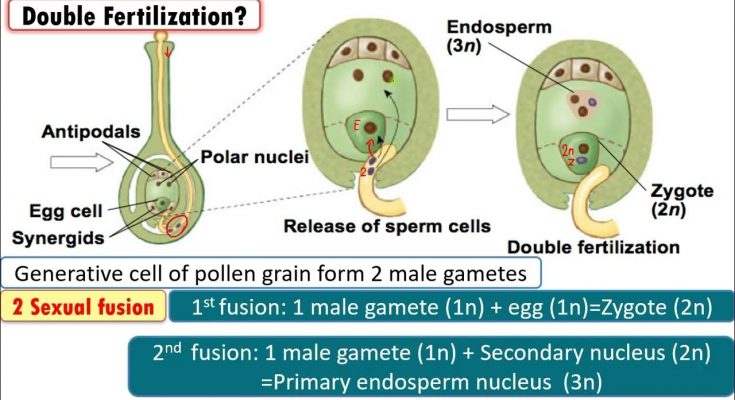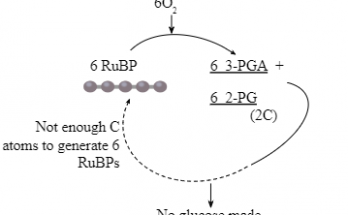Fertilization in an Angiosperm is referred to as Double Fertilization because two fertilization events occur in this process.
- The First Fertilization event is the fusion of a sperm cell with the egg cell, which results in the formation of a zygote.
- The Second Fertilization event is the fusion of another sperm cell with the central cell, which results in the formation of a Triploid endosperm.
Endosperm provides nutrition to the developing embryo and seedling. Hence, two Fertilization events in Angiosperm result in the formation of both the Zygote and the endosperm, which are essential for seed development and reproduction.
The zygote is the first cell of the future embryo and will develop into the mature plant. The endosperm is a triploid (3N) tissue that provides nutrients for the developing embryo.
The Cells involved in Double Fertilization are:
- The sperm Cell (1N) from the Pollen Grain
- The Egg cell (2N) from the Ovule
- The Secondary Nucleus (2N) from the Synergid.

The cells involved in double fertilization have different ploidy levels. The female gametophyte, also known as the embryo sac, is diploid, with two sets of chromosomes (2n). The egg cell within the embryo sac is also diploid, with 2n chromosomes.
The two sperm cells, on the other hand, are haploid, with only one set of chromosomes (n). One sperm cell fuses with the egg cell to form the zygote, which is the first cell of the developing embryo and has a ploidy level of 2n. The other sperm cell fuses with the central cell of the embryo sac, which leads to the formation of the endosperm, a triploid cell (3n).
Therefore, the ploidy of the cells involved in double fertilization is:
- Sperm cell: 1N
- Egg cell: 2N
- Secondary nucleus: 2N
- Zygote: 2N
- Endosperm: 3N.
Did you find this article helpful? We’d love to hear your thoughts and suggestions in the comments!
Also Check – “Pollination is Prerequisite for Fertilization in Flowering Plants” Explain
Also Check – How is the Process of Pollination Different from Fertilization
Also Check – Angiosperms- Characteristics, Classification, and Reproductive Biology


2 Comments on “Why is fertilization in an Angiosperm referred to as Double Fertilization? Mention the Ploidy of the Cells Involved.”